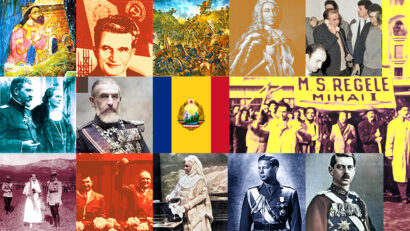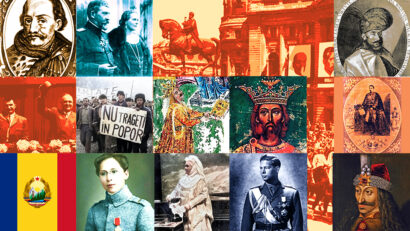Romanian-Japanese Diplomatic Relations
In 1902, the Japanese ambassador to Vienna initiated contacts with the Romanian side

Steliu Lambru, 01.09.2025, 13:45
Regardless of physical distances, people, communities and societies come closer because they feel and desire closeness. Until the 20th century, when globalization reduced everything, people had a natural attraction to their more distant peers. They wanted to learn their customs, learn their language, and get to know their mentalities. Romanians and Japanese have known each other formally for approximately 125 years, the writings of the Romanian traveler Nicolae Milescu Spătarul about the Japanese from the second half of the 17th century being from a time when the movement of people was reduced.
At the beginning of the 20th century, more precisely in 1902, the Japanese ambassador to Vienna initiated contacts with the Romanian side and expressed his desire for bilateral relations to be established between the two countries. A trade treaty was signed that year that would constitute the legal basis for the development of the relationship. At the outbreak of the First World War, Romania and Japan were on the same side of the trenches, in the Entente alliance. In August 1917, Romania opened its diplomatic representation in Tokyo, with Japan doing the same five years later, in 1922. Between 1922 and 1927, the Romanian legation in Tokyo was closed due to budget cuts, but after 1927, when the Romanian legation reopened, relations would operate uninterruptedly until September 1944. During World War II, Romania and Japan were allies again, this time within the Rome-Berlin-Tokyo Axis.
After the war, relations resumed in 1959, and Ion Datcu was appointed Romania’s ambassador to Japan in 1966. In 1994, interviewed by the Oral History Center of the Romanian Broadcasting Company, Datcu recalled that when he arrived at the post, he did not find many Japanese officials who knew much about the country he came from.
“Regarding Romania, I was amazed by the little knowledge that existed in parliamentary circles, even among members of the government. They knew very little, and I remember, at that time, when we were discussing certain issues, even European ones, they could not understand the fact that we had different positions from the Soviet Union. They saw this part of Europe as a block of a monolith. In fact, this was not only a Japanese thing, I found the same thing in the USA. But I want to say that businessmen, on the other hand, knew things, had interests. I visited many enterprises, we were already buying ships, building ships, I also christened some ore carriers, fishing vessels were bought. Even the big electronic equipment companies were prospecting the market. I noticed this interesting difference between politicians and businessmen. There was a big discrepancy.”
But Ion Datcu was going to get a big surprise at the meeting with the Japanese sovereign.
“Emperor Hirohito was an extraordinarily likable man, beyond his aura of mysticism, he was an extremely warm, approachable man. And I had the incredible surprise that the emperor knew more about Romania than the members of the government at that time. He started talking to me about the Danube Delta and was a great specialist in fauna, especially in fish. And he even showed me this, he had some books, and then I promised him ‘Your Majesty, I’ll do my best’, and when I went on vacation and I brought him some books that I found, with maps of the Danube Delta, and I offered them to him. And he kept asking me, ‘How long will this paradise in Europe last?’ And I came up with the idea, I said ‘Maybe you come once and see the Danube, the Danube Delta and the Black Sea’, this area that he considered to be of great interest for his studies. He had probably studied biology and studied various animals from these waters.”
Romanian-Japanese relations were dominated by economic issues. Ion Datcu even said that the Japanese had invented a new type of diplomacy, the economic one.
“My mandate in Bucharest was, indeed, almost entirely economic. At that time, we had the idea of modernizing a series of industrial capacities, including the aluminum factory. I remember doing it with a company, Marubeni, we built a fleet, and we were trying to export as well and we even managed to export billets to a country that produced steel of certain types and sizes, they produced ball bearings and many other products, I even remember an egg paste. It was not a very big political interest from the Romanian government’s point of view. At that time, Japan was an economic interest, and from the Japanese point of view it was the flowering period of the so-called economic diplomacy. They inaugurated economic diplomacy. For me, who had studied these aspects a lot, I had the impression that economic diplomacy could not be done apart from politics, apart from military factors and so on, as is normal. The truth is that the Japanese, indeed, developed and refined economic diplomacy. What did this mean? Their foreign policy and diplomatic priorities were established, apart from the United States of America, in the neighboring area and elsewhere, according to economic interests.”
Romania and Japan, two countries located at a great distance from each other, already have a century-old tradition of bilateral contacts. It is a tradition that keeps them close through the past, but also through the values of the present.





























